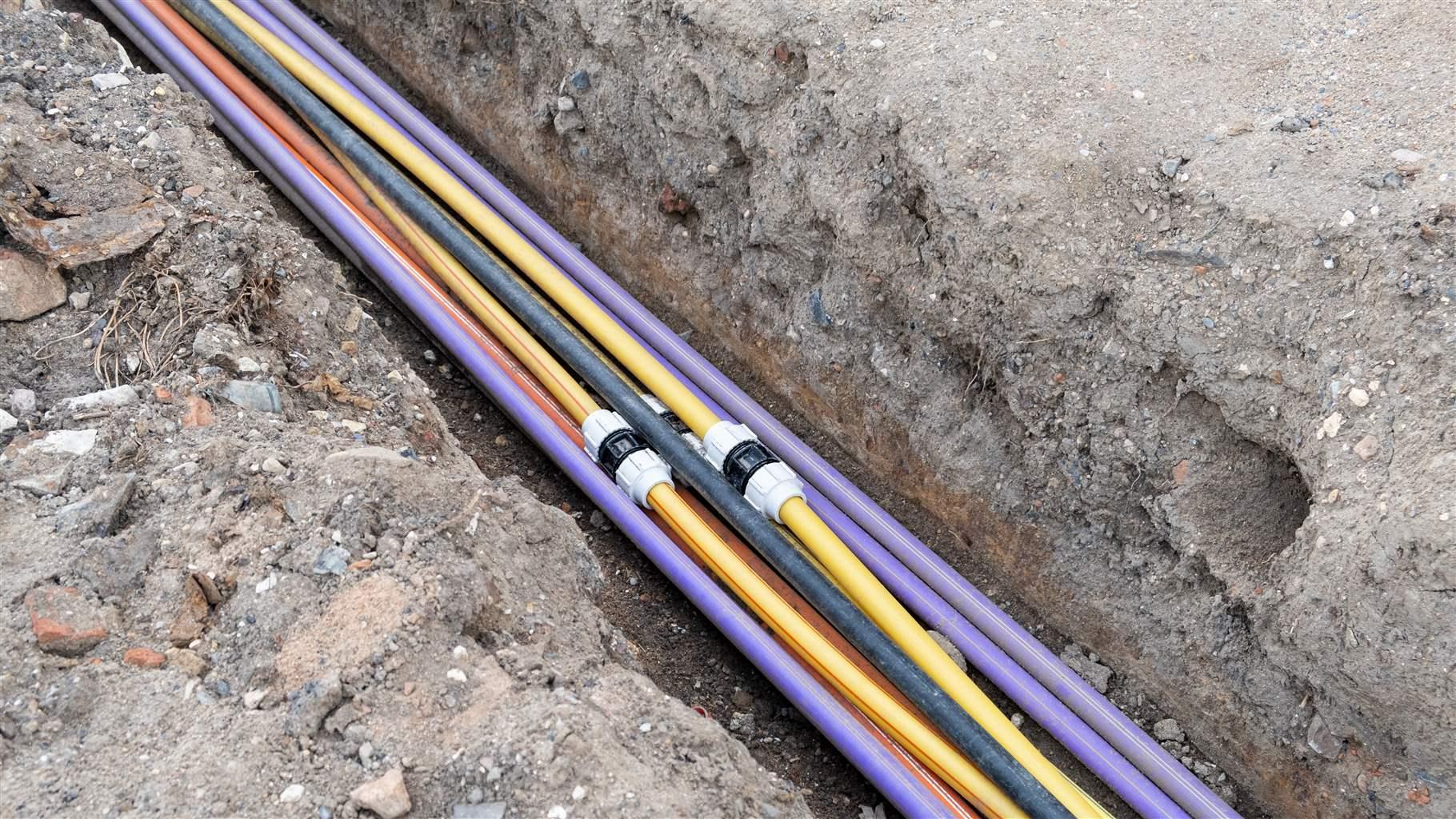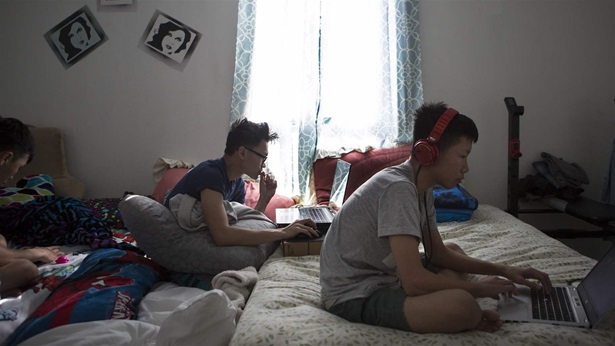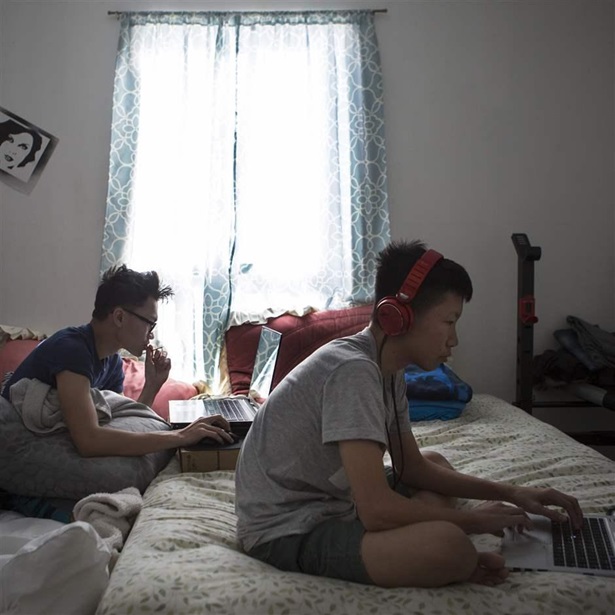Frequently Asked Questions About the Affordable Connectivity Program
What Americans need to know about this subsidy and why it’s critical to universal internet access

Overview
The federal government and states are partnering to deploy $80 billion in infrastructure and pandemic recovery dollars to build broadband networks in unserved areas of the country. But even after the new networks—many of which are years away—are online, millions of Americans may still be unconnected because service plans are too expensive. To help meet this challenge, the federal Affordable Connectivity Program (ACP) provides a critical complement to federal and state investments: It helps make high-speed internet plans more affordable for consumers and encourages internet service providers (ISPs) to invest in more communities. But this key program is at risk of expiring. Read on to find out more about ACP.
What is the Affordable Connectivity Program?
Congress created ACP in the bipartisan Infrastructure Investment and Jobs Act of 2021 with an initial funding allocation of $14.2 billion.1 ACP provides subsidies of $30 a month ($75 on Tribal lands and in high-cost rural areas) to help eligible Americans afford internet plans. Program subsidies are available to households earning at or below 200% of federal poverty guidelines, Pell Grant recipients, families receiving Supplemental Nutrition Assistance Program benefits, and Medicaid beneficiaries.2 Despite being in operation only since January 2022, ACP has achieved a higher participation rate than other federal telecommunications subsidies, and has garnered overwhelming bipartisan support (78%) among voters, members of Congress, and governors throughout the country.3
Isn’t ACP a temporary program?
No. That is a common misconception. When Congress created the program, it made the subsidy available to qualifying households immediately, but it also set a new standard in federal policy by requiring that ISPs that receive federal infrastructure deployment funds participate in ACP. In doing so, Congress ensured that future customers would not be priced out of those new connections.
Does the price of broadband matter to consumers?
Yes. The cost of broadband—and not the availability of service—is the biggest barrier to getting every American online. In 2022, 18% of consumers said they did not have internet at home because it was too expensive.4
How is ACP related to broadband access?
Increasing the availability of broadband does not necessarily increase the number of customers on a network.5 And an uncertain or small customer base discourages providers from investing in unserved areas, with the result that even customers who can pay full price for a subscription do not have access. By cutting costs for qualifying customers, ACP helps increase certainty for providers and reduce taxpayer expenditures. In fact, ACP can reduce the amount taxpayers spend on broadband infrastructure deployment in rural communities by up to 25%.6
Does ACP provide free internet?
No. Although some internet service providers changed their low-cost offers to align with ACP pricing and service requirements, not all providers offer plans that cost less than $30 a month. Even with the ACP benefit, households still pay a median price of $40 per month for their broadband plans.7 And although the customer is responsible for enrolling in the program, the subsidy goes directly to the provider. Additionally, because customers can leverage ACP to select plans and providers that better suit their household needs, the program can help generate competition and drive down subscription prices.8
Does ACP work as intended?
Yes. With more than 20 million households currently enrolled in ACP, the program has and will continue to reduce cost as a barrier to internet access for low-income families and other eligible households.9 As of August 2023, 38% of eligible households are enrolled in ACP.10 And according to AARP, more than half of those households are headed by adults 50 and older, demonstrating the importance of this subsidy for Americans living on a fixed income.11
Who uses ACP?
ACP use is regionally and politically diverse. Enrollment is high across both urban and rural congressional districts. For example, 35% of Kentuckians in Appalachia (KY-05) are enrolled as are 39% of residents in Los Angeles (CA-22).12 And data shows that ACP spending is fairly equal between congressional districts represented by Republicans ($3.37 billion spent) and by Democrats ($3.29 billion spent)—which shows why the 64% of Republicans, 70% of Independents, and 95% of Democrats support continuing the program.13
Is ACP at risk?
Yes. Unless Congress acts, research indicates that ACP funds will be exhausted by spring 2024, and pursuant to Federal Communications Commission (FCC) rules, ISPs may begin notifying participating households as early as November 2023 that the program is ending.14
What happens if ACP runs out of money?
First and foremost, if Congress fails to fund ACP, it will leave millions of American families without the help they need to afford a home broadband subscription, including those already enrolled and subscribed. But it also would defy the will of the voters and undermine investments by FCC and state and local entities—including nonprofits, ISPs, and state broadband offices—to promote the program among eligible consumers.
Further, allowing the program to lapse would harm other state and federal broadband programs, including the Broadband, Equity, Access, and Deployment (BEAD) program and the Capital Projects Fund (CPF), which provide billions of taxpayer dollars for infrastructure and digital literacy and require ISPs to participate in ACP.15
How does ACP work in tandem with those other federal broadband programs?
BEAD and CPF are connecting communities that otherwise lack a business case for providers because rugged topography, low population density, or low income levels make them expensive to serve. ACP helps cut the high cost of operating in these communities, but ISPs may be reluctant or financially unable to participate in these deployment programs—and connect these unserved consumers—if ACP runs out.
Without it, the bipartisan broadband promises made by Congress may not come to fruition, which is why Congress must act by the end of the year to secure ACP’s long-term future.
Endnotes
- Infrastructure Investment and Jobs Act, H.R. 3684, U.S. House of Representatives (2021), https://www.congress.gov/bill/117th-congress/house-bill/3684.
- Federal Communications Commission, “Affordable Connectivity Program,” accessed Aug. 11, 2023, https://www.fcc.gov/acp.
- Institute for Local Self-Reliance, “Affordable Connectivity Program,” accessed Aug. 11, 2023, https://acpdashboard.com/; J. Thayer, “New Poll: Broadband Affordability Program in Jeopardy but Has Overwhelming Bipartisan Support,” Digital Progress Institute, March 1, 2023, https://digitalprogress.tech/joels-blog/; J. Gottheimer et al., letter to U.S. Representatives Kevin McCarthy (R-CA) and Hakeem Jeffries (D-NY), and U.S. Senators Chuck Schumer (D-NY) and Mitch McConnell (R-KY), Aug. 17, 2023, https://d12t4t5x3vyizu.cloudfront.net/gottheimer.house.gov/uploads/2023/08/8.17.2023-Reps.-Gottheimer-Fitzpatricks-Letter-to-Leadership-on-ACP-Broadband.pdfEducationSuperHighway, “Governors in 29 States Have Already Made Affordable Connectivity Program Adoption a Priority,” accessed Aug. 21, 2023, https://www.educationsuperhighway.org/no-home-left-offline/governors/.
- M. Cao and R. Goldberg, “Switched Off: Why Are One in Five U.S. Households Not Online?” National Telecommunications and Information Administration, accessed Aug. 16, 2023, https://ntia.gov/blog/2022/switched-why-are-one-five-us-households-not-online.
- J. Cannon, “The Affordable Connectivity Program: When Government Spending Is Good,” R Street Institute, accessed Aug. 11, 2023, https://www.rstreet.org/commentary/the-affordable-connectivity-program-when-government-spending-is-good/.
- K. Clark et al., “Closing the Digital Divide Benefits Everyone, Not Just the Disconnected” (Common Sense and Boston Consulting Group, 2022), https://www.commonsensemedia.org/sites/default/files/research/report/2022-cs-bcg-closing-digital-divide_final-release-3-for-web.pdf.
- B. Whitacre et al., “Half of ACP-Eligible Households Still Unaware of the Program,” Benton Institute for Broadband and Society, March 17, 2023, https://www.benton.org/blog/half-acp-eligible-households-still-unaware-program.
- Cannon, “The Affordable Connectivity Program.”
- Federal Communications Commission, “More Than 20 Million Households Enroll in Nation’s Largest Broadband Affordability Program,” news release, Aug. 14, 2023, https://docs.fcc.gov/public/attachments/DOC-395990A1.pdf.
- Institute for Local Self-Reliance, “Affordable Connectivity Program.”
- E.C. Baig and E. Waldman, “Are You Eligible for a Discount on High-Speed Internet?” AARP, last modified July 18, 2023, https://www.aarp.org/home-family/personal-technology/info-2021/fcc-subsidy-helps-broadband-internet-access.html.
- Digital Progress Institute, “The Affordable Connectivity Congressional Map,” accessed Aug. 16, 2023, https://map.digitalprogress.tech/.
- Institute for Local Self-Reliance, “Affordable Connectivity Program”; Thayer, “New Poll.”
- P. Garnett, “Affordable Connectivity Program Needs Permanent Funding,” The Hill, June 24, 2022, https://thehill.com/opinion/technology/3535663-affordable-connectivity-program-needs-permanent-funding/; Thayer, “New Poll.”
- J. Engebretson, “Providers Winning CPF or BEAD Funding Must Support ACP, but ACP Could Be Gone Next Year,” Telecompetitor, July 11, 2023, https://www.telecompetitor.com/providers-winning-cpf-or-bead-funding-must-support-acp-but-acp-could-be-gone-next-year/.
















